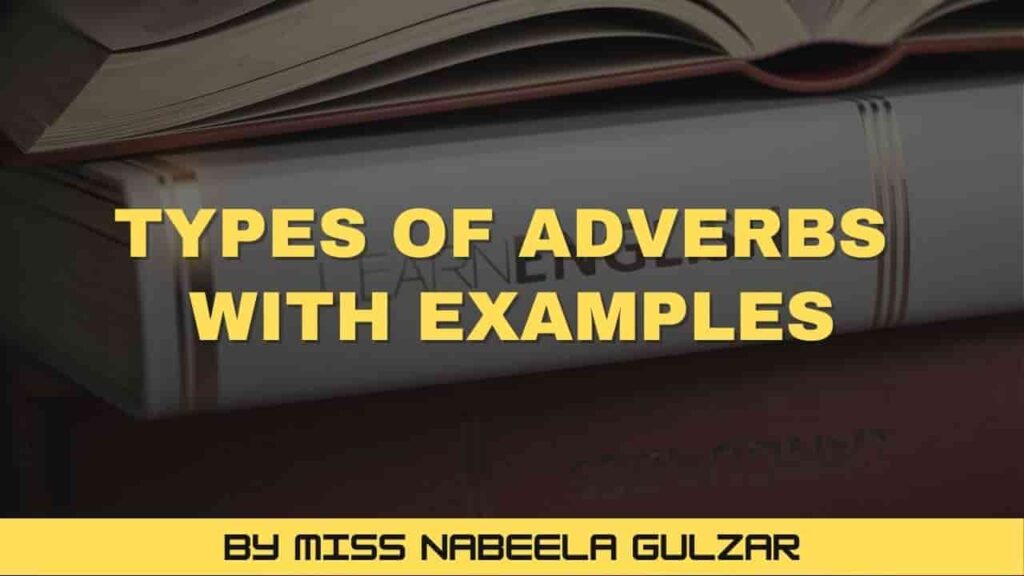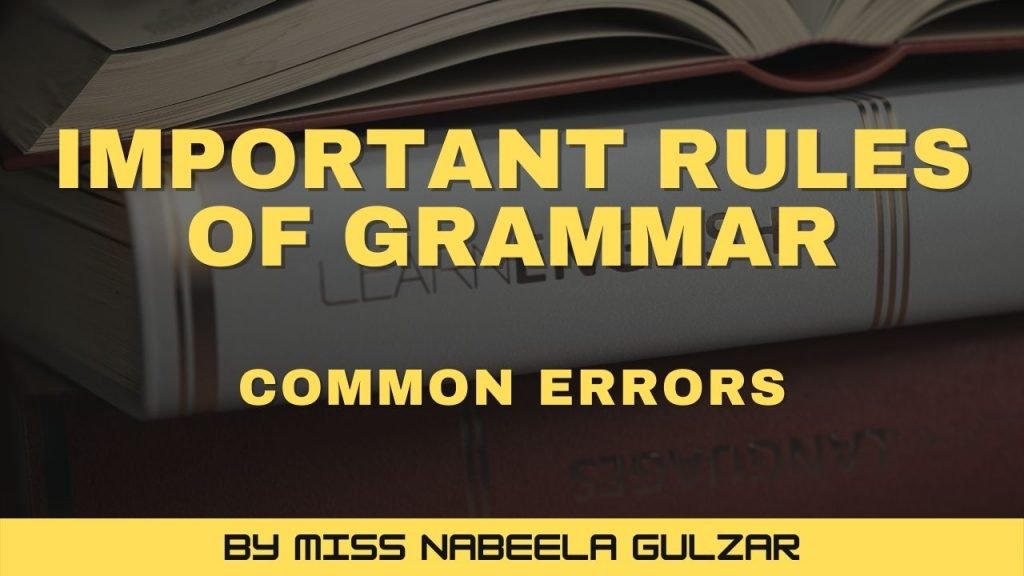Adverb and adverb is a word that modifies the meaning of a verb, adjective, or another adverb.
For Example:
- Ramesh runs quickly.
- Farah is a very pretty girl.
- Certainly, you are wrong.
Types of Adverbs
The adverbs have the following ten types.
- Adverb of time
- Adverbs of place
- Adverbs of manner
- Adverbs of degree or quality
- Adverb of affirmation negation
- Adverb of cause and reason
- Adverb of comparison
- Adverbs of numbers or frequency
- Interrogative adverbs
- Relative adverbs
Let’s explain them briefly.
1. Adverb of Time
They show time and period.
For Example:
- that day you arrived late.
- Never waste your time.
2. Adverb of Place
They show the place of any occurrence.
For example:
- The thirsty crow searches for water everywhere.
- Going outside I picked up my phone.
3. Adverb of Manner
They show manners of any occurrence.
For example:
- Shahana sang so sweetly.
- He faced the challenge bravely.
4. Adverb of Degree or Quantity
They show how much or in what degree or to what extent something has happened.
For example:
- You are all together mistaken.
- It is enough for me.
5. Adverb of Affirmation or Negation
They affirm or negate something.
For example:
- Surely, I will help you.
- He did not give me an answer.
6. Adverb of Cause or Reason
They show cause or reason of any occurrence.
For example:
- Though, I am unaware of this matter.
- I am ill, So I am not going to the party.
7. Adverbs of Comparison
They denote the degree of an adverb like the adjective.
For example:
- Ali came earliest of all.
- Maham rides well.
8. Adverb of Number or Frequency
They show numbers or frequency.
For example:
- Sometimes I take butter for breakfast.
- Explain it firstly.
9. Interrogative Adverbs
They are used to ask questions.
For example:
- Where is it raining?
- How do you do, Sehrish?
10. Relative Adverbs
They are used to join two sentences.
For examples:
- Is it why you rejected my proposal?
- Was it the place where you hid that diamond?
Formation of Adverbs
1. Adverbs of manners are mostly formed from adjectives by adding ‘ly’.
For example:
Clever – cleverly,
Quick – quickly,
Fast – fastly,
Fool – foolishly,
Brave – bravely,
Beautiful – beautifuly, etc.
If the adjective ends in ‘y’ preceded by a consonant, change ‘y’ into ‘i’ and add ‘ly’.
For example:
Happy – happily,
Ready – readily,
Heavy – heavily, etc.
2. Sometimes adverbs are made up of nouns and qualifying ejectives.
For example;
Meanwhile,
Meantime,
Midway,
Otherwise,
Sometimes,
Yesterday, etc.
3. There is a class of adverbs which are derived from the pronouns.
For example;
The – there – thither – thence – then – Thus,
He – here – hither – hence,
Who – where – Whither – whence – when – how.
4. Some adverbs are compounds of a noun or a preposition.
For example;
Besides, today, tomorrow, overboard, etc.
5. Some adverbs are compounds of a preposition and an adjective.
For example;
Abroad, along, anew, aloud, behind, below, beyond, etc.
6. Some adverbs are compounds of a proposition and an adverb.
For example;
Beneath, before, within, without, etc.
Position of Adverb
1. Adverbs of manner are generally written after the verb or after the object, if there is one;
For example;
- Heena is working slowly.
- They solved the issue of setting the black stone wisely.
2. Adverbs of frequency are normally put between the subject and the verb but if there is more than one word in the verb, they are put after the first word.
For example;
- I quiteagree with you.
- He has never seen a lion.
3. The adverb is placed after the verb, If the verb are, “is/am/are/ was or were” .
For example:
- I am never late for the office.
- we were just off.
4. When an adverb modifies an adjective or another adverb, the adverb usually comes before it.
For example;
- His answer was quite wrong.
- Don’t speak so fast.
5. The adverb ‘enough’ is always placed after the word, which is modified.
For example;
- Is that box big enough?
- She was kind enough to listen to us.
Degrees of Comparison of Adverb
Some adverbs have three degrees of comparison. Such “adverbs” are generally compared like adjectives.
For example:
- I came early this morning.
- You came earlier.
- He came earliest of all.
Rule no. 1:
If you want to know how to make degrees see my post on errors in the use of adjectives.
| Positive Degree | Comparative Degree | Superlative Degree |
| High | Higher | highest |
| Fast | Faster | Fastest |
| Long | Longer | Longest |
| Deep | Deeper | Deepest |
| Hard | Harder | Hardest |
| Late | Later | Latest |
| Loud | Louder | Loudest |
Rule no. 2:
| Positive Degree | Comparative Degree | Superlative Degree |
| Softly | More softly | Most softly |
| Slowly | More slowly | Most slowly |
| Swiftly | More swiftly | Most swiftly |
| Generous | More generously | Most generously |
| Skilfully | More skilfully | Most skilfully |
Rule no. 3:
| Positive Degree | Comparative Degree | Superlative Degree |
| Good | Better | Best |
| Much | More | Most |
| Little | Less | Least |
| Bad | Worse | Worst |
| Far | Father | Farthest |
Hopefully, your concept about Types of Adverbs with Examples is clear now, This lecture is part of the whole series of English Grammar by Miss Nabila Gulzar, For Other Lectures Click Here also We have an Essay on every topic, Check the complete list here. If you are Studying in Matric Free Video Lectures of Maths, Physics and English are here, and if we got you covered for I.COM Business Maths also.







